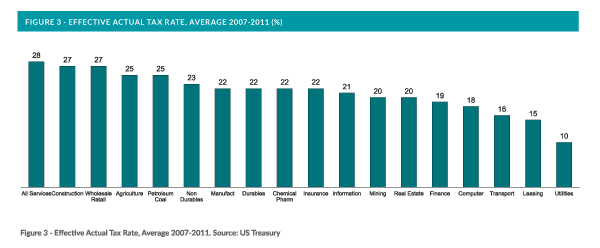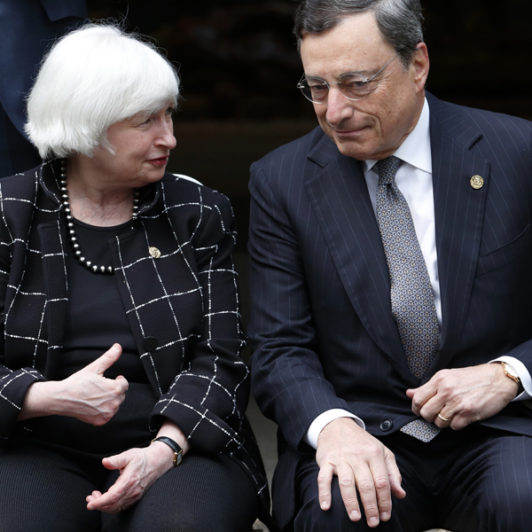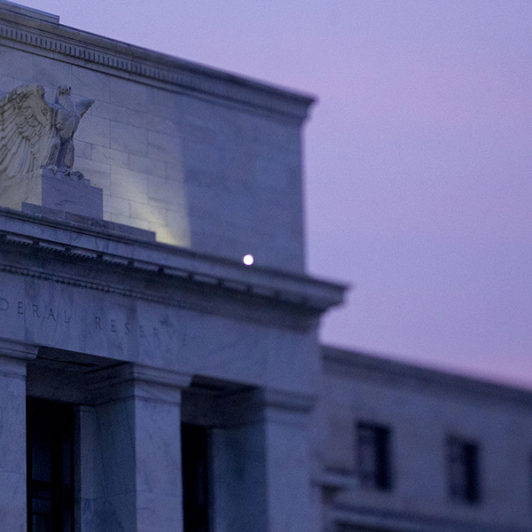Policy uncertainty is an investor’s nearly constant companion, not only in times of crisis but even in relatively benign environments. With U.S. tax reform legislation seemingly on track to pass in short order, a casual market observer could be forgiven for assuming that uncertainty in general—and uncertainty around tax policy, in particular—is falling.
The reality appears more complicated. As of this writing, the U.S. Senate had passed its version of a $1.4 trillion tax reform bill. Assuming the House and Senate are able to merge their two versions of the legislation, it is expected quickly to be signed into law. While many details remain unclear, it would stand to reason that companies with large tax liabilities will be among those with the most to gain from a large cut in the corporate income tax rate (see appendix for average effective tax rates by industry).
Tax policy uncertainty remains elevated (for now)
Indeed, companies in the S&P 500 Index with the highest tax rates have seen a large jump in volatility recently, as the debate over tax reform took various twists and turns. Figure 1 plots the ratio of the volatility of high tax companies to that of the broader index.¹ In the past several weeks, the chart shows, shares of high-tax companies became as much as 20% more volatile than the overall market.
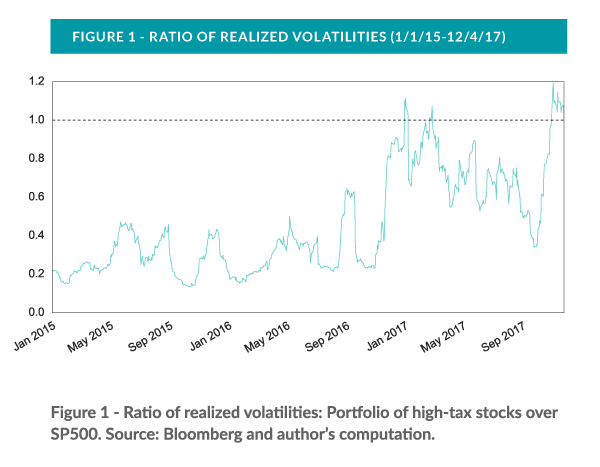
Perhaps more interestingly, while high-tax companies’ relative volatility seems to have eased as the Senate passed its version of the tax reform bill, it remains elevated relative to the rest of the index. One reason may be that even though enactment of tax reform appears highly probable, the bill’s actual effects remain somewhat murky.
Broader policy-uncertainty measures have been rising
It’s also worth remembering that tax uncertainty is only one of many different sources of U.S. policy uncertainty that investors must contend with. In the short term, for example, the government still must negotiate a spending bill. The future of the Affordable Care Act is unclear. Uncertainty persists about the pace, timing, and ultimate effects of future interest rate hikes, and a new Fed chair is taking office early next year. Election Day 2018 is less than a year away.
Indeed, zooming out from the narrow question of tax policy, one finds that policy uncertainty more broadly has been rising—even as tax reform has appeared to near resolution. Baker, Bloom, and Davis (2016)² describe an interesting proxy for overall policy uncertainty with their daily Index of Economic Policy Uncertainty (EPU). The index derives an overall measure of uncertainty from thousands of newspaper articles going back to 1900, with the authors finding that policy uncertainty is associated with higher equity-market volatility, reduced investment and employment in certain sectors, and other effects.
Figure 2 plots the Economic Policy Uncertainty Index from the beginning of 2017 and shows that broad, macro-level uncertainty surrounding U.S. policy began rising late this fall, after having moderated throughout much of the year.³
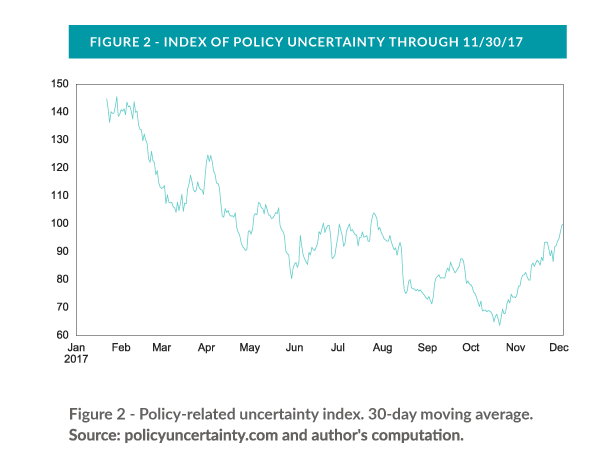
Implications for allocators
Despite the likely imminent passage of major tax reform legislation, uncertainty about U.S. fiscal and monetary policy appears to be trending higher—not lower—with potential ramifications for future financial market volatility, employment, corporate investment, and other measures. Although the passage of tax reform legislation after a lengthy battle may hint at some sort of closure, allocators should be aware that policy uncertainty seems likely to remain their companion for a long time to come.
Appendix
This appendix provides the average effective actual federal corporate tax rate by industry (2007-2011) as provided by the U.S. Treasury.⁴
